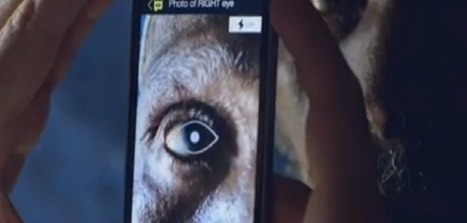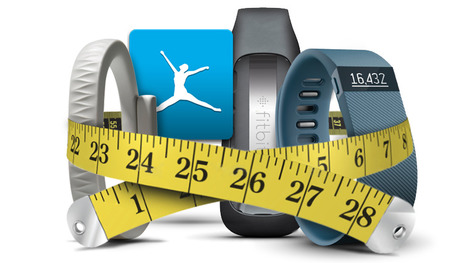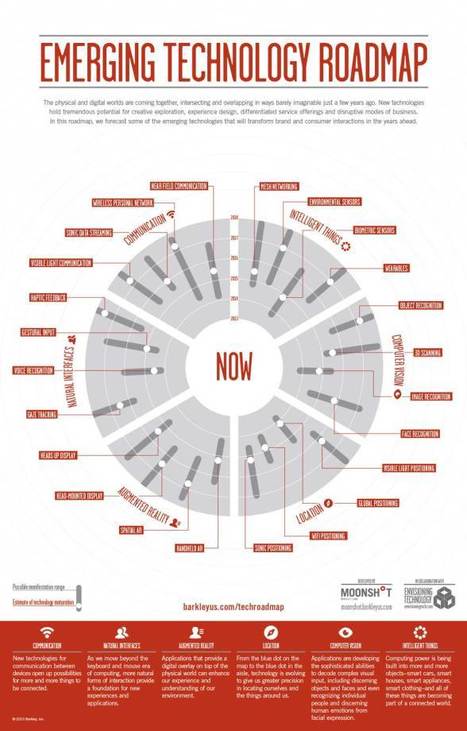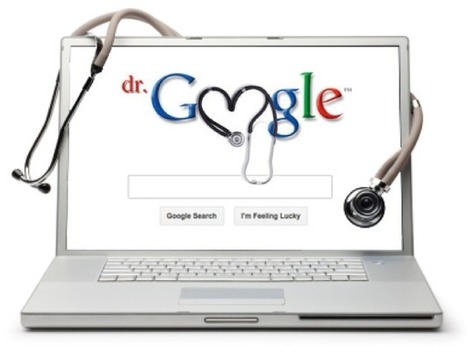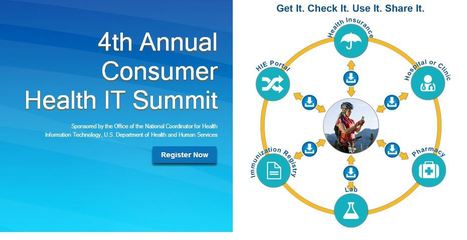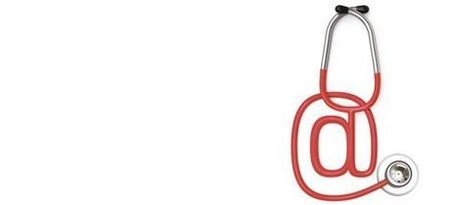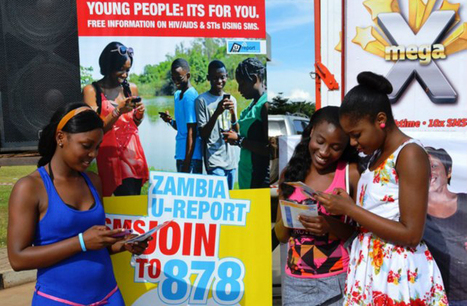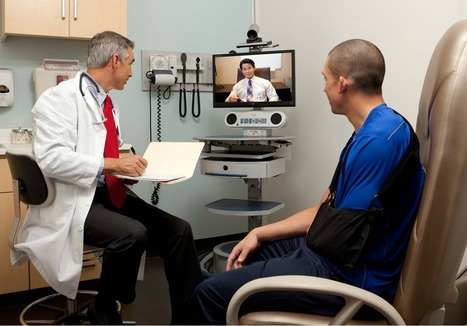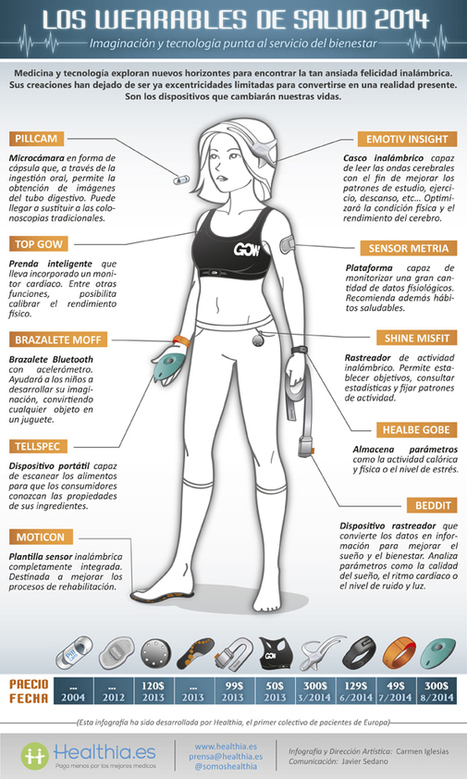 Your new post is loading...
 Your new post is loading...
Africa’s basic infrastructural challenges – such as poor transport links, and the limited number of medical professionals and clinics – have long hindered the health sector. However, across the continent, Africa’s innovators are looking to leverage technology to ensure quality medical care is universally accessible. Disrupt Africa here introduces five exceptional e-health startups, making an impact in healthcare provision continent-wide.
Via Ignacio Fernández Alberti
A roundup of infographics in healthcare in 2014 from CIO roles to hospital digital health priorities to telemedicine.
Via Ignacio Fernández Alberti
Una información sobre atención médica por Internet ha copado muchos titulares en el ámbito de la eSalud estos días atrás. La noticia en sí habla de el lanzamiento en Estados Unidos de Talk with a Doctor, un servicio nuevo vía App de Google, del que todavía no se conoce todos los detalles, sobre atención médica a tiempo real en Internet y, de momento, de forma gratuita. ¿Qué es esta nueva y ¿novedosa? iniciativa de Google? ¿La revolución que muchos esperaban o una estrategia más del buscador líder?
Via Juan Jesús Baño Egea

|
Scooped by
juandoming
|
The Office of the National Coordinator for Health IT (ONC) invites you to join us in D.C. on September 15th for the 4th Annual Consumer Health IT Summit. This exciting day-long event highlights public and private sector efforts to advance patient engagement by empowering people with their digital health data and technology. Space is limited and fills up quickly so register today to secure your spot to attend the Summit (some portions of the Summit will be available by webcast; check back for more information soon). Register today by clicking https://pointpass.com/events/Consumer_Health_IT_Summit_2014/Default.aspx
Existen hoy en día disponibles en las stores de Google y de Apple poco más de 100.000 apps en el sector salud. Es una barbaridad casi caótica que indica, sobre todo, hasta donde ha llegado la fiebre en un sector inexistente hasta hace pocos años pero que ahora crece a un ritmo de tres dígitos al año en porcentajes. De acuerdo con un reciente informe de la consultora IMS sobre la realidad de las empresas que se dedican a la m-health en el mundo, el 80% de esas 100.000 aplicaciones de salud que hay en el mercado tienen un valor mínimo. La mayoría de ellas están englobadas en el sector del wellness (que se puede traducir por bienestar), no tienen multifuncionalidad, desaprovechan las posibilidades multimedia, muchas son un PDF de algo escrito en papel y pasado a pantalla,no se han diseñado de una forma nativa para el dispositivo en el que se verán, tienen menos de 500 descargas y están creadas por pequeñas empresas que no tienen integrados equipos multidisciplinares complejos, que es lo que necesita la m-health.
Via Ignacio Fernández Alberti
|
El triángulo que forman tecnología, médico y paciente se va ampliando. Desde una simple consulta en la red hasta sofisticados sistemas de monitorización de los parámetros corporales (como la tensión o la respiración) que sirven para la telemedición o medición a distancia de hábitos que, sumados a los de otros individuos, conforman un enorme volumen de datos (conocido como big data) que revolucionará la investigación epidemiológica. Lo más básico comienza en Google, donde una de cada 20 consultas es sobre salud. Pero no solo las hacen los enfermos; en una encuesta de iDoctus (aplicación de consulta para médicos) realizada en 2014 entre más de 7.400 facultativos de España, el 60% aseguraba que usa tres dispositivos para llegar a la información médica (ordenador, tableta y móvil) y casi el 95% accede por dos de ellos. Tres de cada cuatro encuestados afirmaban que las aplicaciones médicas le ayudan a ahorrar tiempo, y el 88% concluía que incrementan la seguridad en el diagnóstico y en la prescripción. Casi la mitad de los médicos declaraba utilizar aplicaciones médicas delante de los pacientes, y el 45% creía necesario recomendárselas, siempre que cuenten con un aval científico-médico.
. Sergio Vañó, coordinador de Innovación en Tecnologías Médicas del Hospital Ramón y Cajal, también ve más virtudes que perjuicios en las posibilidades de Internet: “La automedicación ha existido siempre. El que era hipocondríaco se iba a la biblioteca y buscaba en un libro. Ahora lo tiene más fácil, pero no creo que la tecnología sea una barrera, sino una herramienta que se debe usar de forma adecuada”.
leer completo en "La Buena Vida" http://elpais.com/elpais/2015/05/21/buenavida/1432198163_619344.html?id_externo_rsoc=TW_CM
Via Ignacio Fernández Alberti
Everyone deserves a chance to be healthy. Physicians, of course, focus on helping patients. Unfortunately, I often see patients’ frustrations with the health care system itself directed toward doctors. Meanwhile, doctors are under increasing pressures on multiple fronts. Yes, we’re imperfect, but making physicians the primary focus of patient anger will not solve problems we all face as humans who will, at some point, need health care. (Note: I’m using doctors as an example for this piece, but my observations apply to all health care professionals.) Patients need doctors. Doctors need patients. Let’s find a way to value both. http://www.kevinmd.com/blog/2015/01/e-patients-need-e-doctors-heres.html
Via Ignacio Fernández Alberti
The application of mobile technologies in Africa’s healthcare system, popularly known as mHealth, has gained momentum in recent months. Nigeria, the region’s most populous country, for example, managed to contain the deadly Ebola virus in October 2014 partly due to the application of mHealth. Nigerian health officials attribute the success to fast communication and instant tracking made possible by the proactive use of mobile phone technology. See more at: http://www.un.org/africarenewal/magazine/december-2014/africa-wired ;
Via Ignacio Fernández Alberti

|
Scooped by
juandoming
|
7 - 8 October 2014, Rome, Italy.
The Italian Ministry of Health is organizing, under the Italian Presidency of the Council of the European Union the Conference on eHealth that will take place on 7-8 October 2014 in Rome. The Conference on eHealth will be held in conjunction with the European Telemedicine Conference. The Conference on eHealth and the European Telemedicine Conference will share the following sessions: October 7th, 2014 at 15:00: "Joint Opening Keynote Conference on eHealth and European Telemedicine Conference" and October 8th, 2014 at 11:00: "Telemedicine". The Italian Minister of Health, Honourable Beatrice Lorenzin, will attend the Conference to seal with her presence the central role of eHealth on the Italian Presidency's healthcare agenda.
The European Telemedicine Conference event will be presented by HIMSS Europe together with Badalona Serveis Assistencials, Catalonia, Spain, NHS 24, UK, Norwegian Centre for Integrated Care and Telemedicine, Odense University Hospital, Denmark, and UPMC, Italy. http://www.ehealthnews.eu/events/4077-italian-conference-on-ehealth-and-european-telemedicine-conference-2014
The right person in the right place and at the right time is not always possible; telemedicine offers the potential to give audio and visual access to the appropriate clinician for patients. Advances in information and communication technology (ICT) in the area of video-to-video communication have led to growth in telemedicine applications in recent years. For these advances to be properly integrated into healthcare delivery, a regulatory framework, supported by definitive high-quality research, should be developed. Telemedicine is well suited to extending the reach of specialist services particularly in the pre-hospital care of acute emergencies where treatment delays may affect clinical outcome. The exponential growth in research and development in telemedicine has led to improvements in clinical outcomes in emergency medical care. This review is part of the LiveCity project to examine the history and existing applications of telemedicine in the pre-hospital environment. A search of electronic databases including Medline, Excerpta Medica Database (EMBASE), Cochrane, and Cumulative Index to Nursing and Allied Health Literature (CINAHL) for relevant papers was performed. All studies addressing the use of telemedicine in emergency medical or pre-hospital care setting were included. Out of a total of 1,279 articles reviewed, 39 met the inclusion criteria and were critically analysed. A majority of the studies were on stroke management. The studies suggested that overall, telemedicine had a positive impact on emergency medical care. It improved the pre-hospital diagnosis of stroke and myocardial infarction and enhanced the supervision of delivery of tissue thromboplasminogen activator in acute ischaemic stroke. Telemedicine presents an opportunity to enhance patient management. There are as yet few definitive studies that have demonstrated whether it had an effect on clinical outcome. read complete in International Journal of Emergency Medicine http://www.intjem.com/content/7/1/29
Via Ignacio Fernández Alberti
Aún con alergia al término Wearables , prefiriendo “prendas inteligentes” y esperando que en la RAE tomen alguna decisión sobre cómo deberíamos nombrar a estos dispositivos que están ya en boca de todos, os presento ahora una infografía que nos envían desde healthia.es. Han querido mostrar los Wearables de Salud más novedosos del 2014, tanto los que están aún en desarrollo como los que están en su primera fase de venta, productos que en muchas ocasiones han nacido del crowdfunding y que ya tienen fecha pública de lanzamiento. Estos dispositivos ayudarán a monitorizar la progresión de los pacientes y mejorar los diagnósticos, por lo que la comunidad de profesionales de la salud está bien atenta a la evolución de los mismos. El objetivo final es que los Wearables se sincronicen con plataformas médicas ya existentes, permitiendo de esa forma ayudar de forma directa tanto durante la consulta médica como durante el periodo de observación en casa. leer en what´s new http://wwwhatsnew.com/2014/05/29/weareables-de-salud-en-una-infografia/
Via Ignacio Fernández Alberti, Gladys Pintado
|



 Your new post is loading...
Your new post is loading...

